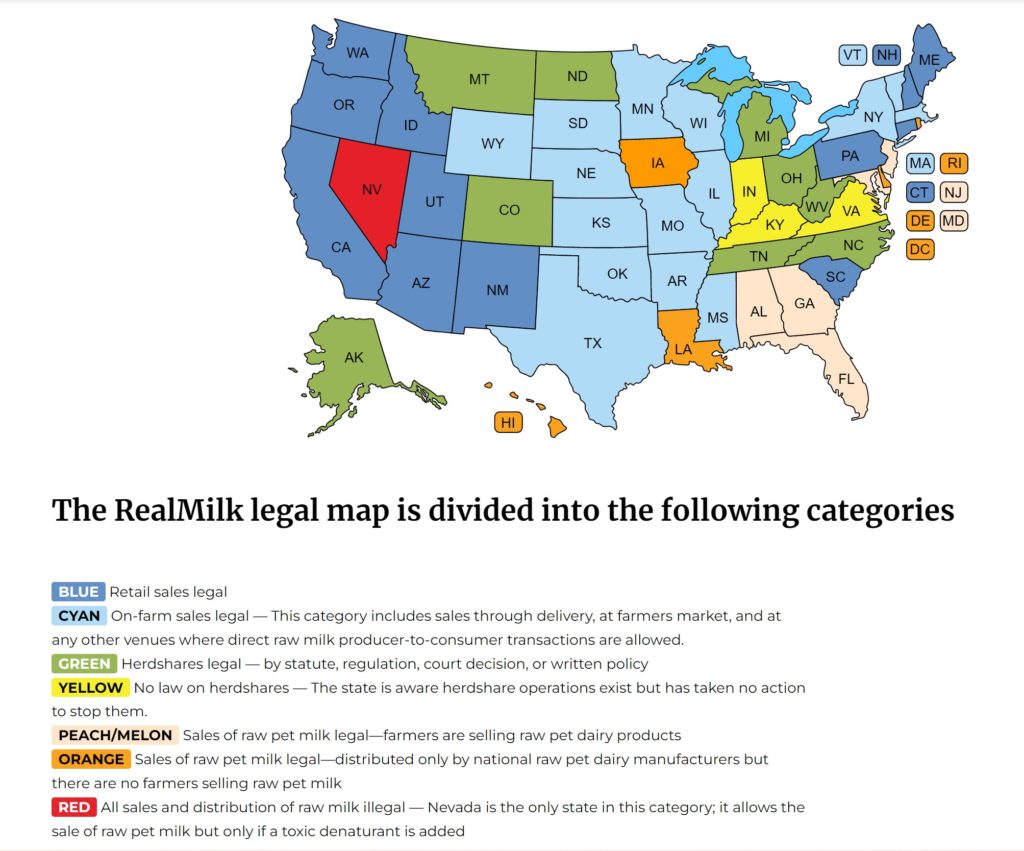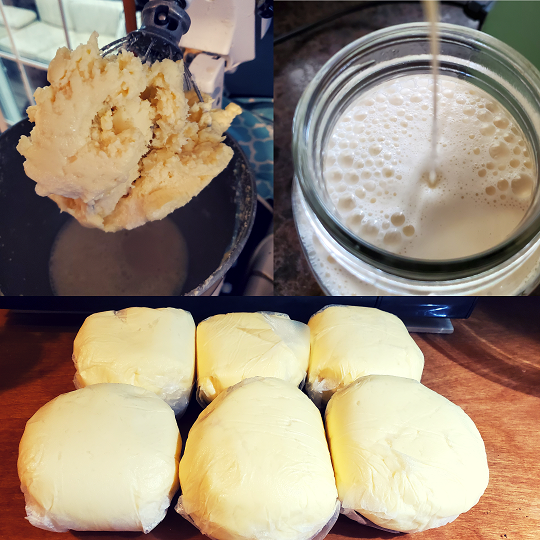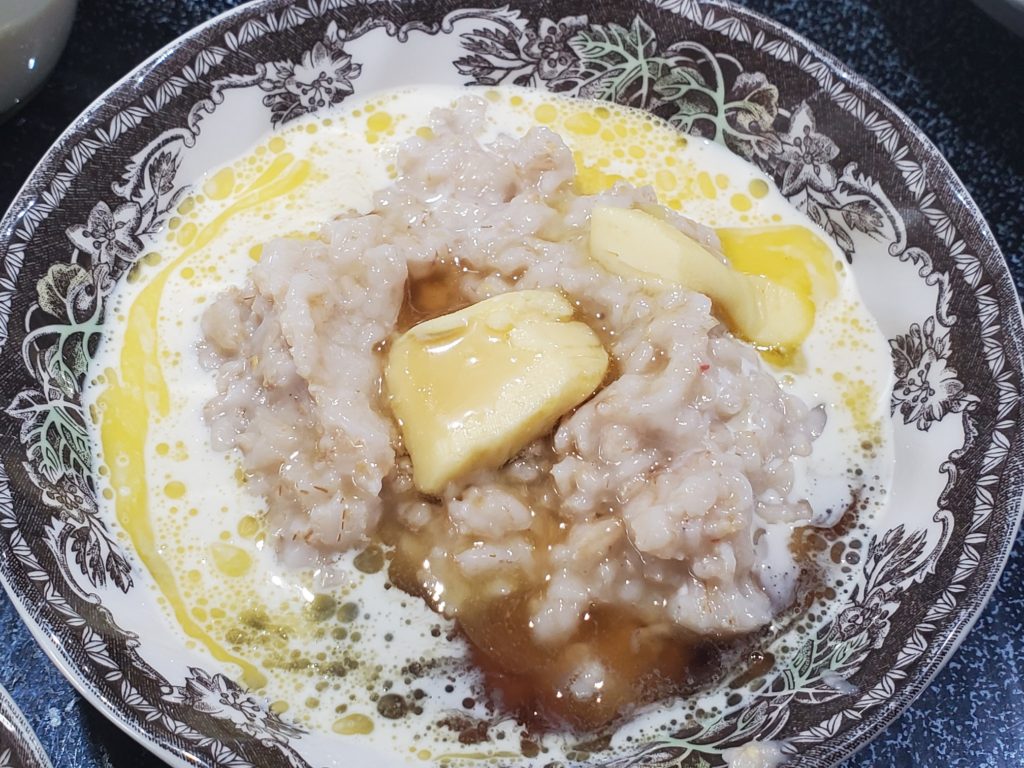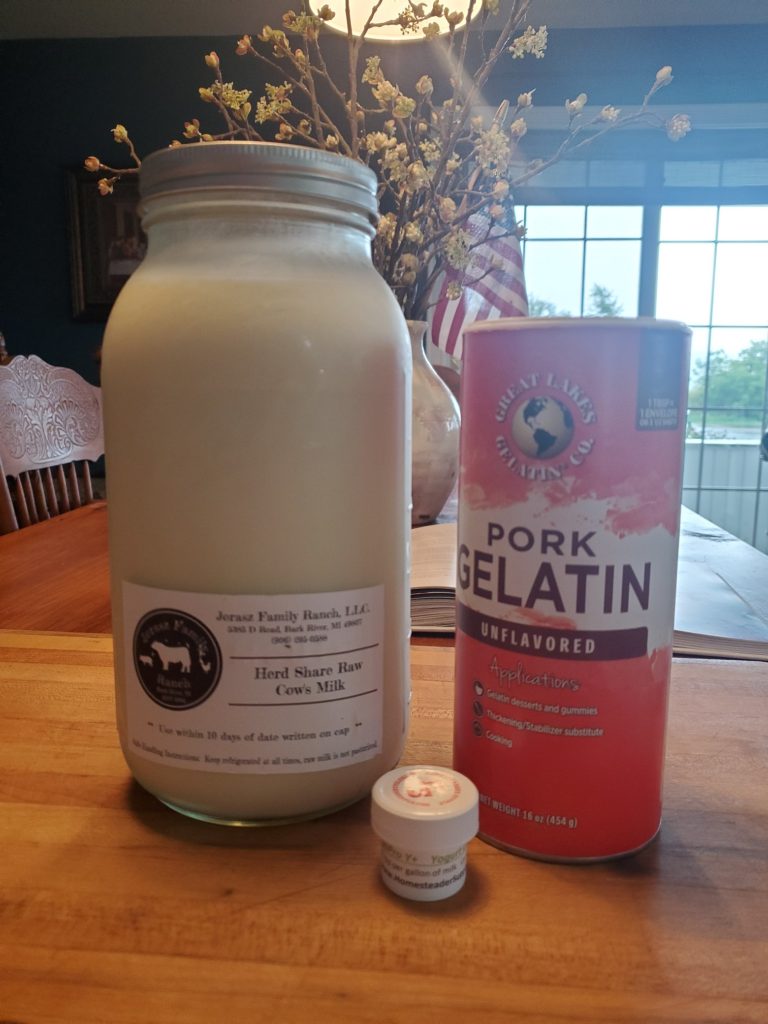Well it sure did take me a long time to come back around to this! If you want to refresh your memory, here’s Part 1.
The second group of principles I want to cover are related to dairy, which sometimes also touches on fats, ferments, & cultures. Dairy is so versatile and adds so much nourishment and flavor to almost every meal!
Weston A Price Principles:
Eat full-fat milk products from pasture-fed cows, preferably raw and/or fermented, such as raw milk, whole yogurt, kefir, cultured butter, full-fat raw cheeses and fresh and sour cream.
Use animal fats, such as lard, tallow, egg yolks, cream and butter liberally.
WAPF
It’s easier to buy recreational drugs in our country, than get your hands on raw milk! That’s why we participate in the Raw Milk Institute, Weston A Price Foundation, and the Farm to Consumer Legal Defense Fund. By supporting these organizations, our time & money goes toward food-freedom advocacy. We want everyone to have access to the foods they feel contribute most to their health and well-being.

Many states, including Michigan, do allow you to drink milk from your own cow (gee thanks…), and herd shares are a legal way to do that without having to milk the cow yourself. By owning a share of a dairy herd, you technically own part of a cow, and therefore have access to part of the milk she provides (with none of the work).
Raw milk is far superior than any pasteurized version- Here’s a resource for you, and also from that page:
| Vitamin C | Raw milk but not pasteurized can resolve scurvy. “…Without doubt… the explosive increase in infantile scurvy during the latter part of the 19th century coincided with the advent of use of heated milks…” |
| Calcium | Longer and denser bones on raw milk. |
| Folate | Carrier protein inactivated during pasteurization. |
| Vitamin B12 | Binding protein inactivated by pasteurization. |
| Vitamin B6 | Animal studies indicate B6 poorly absorbed from pasteurized milk. |
| Vitamin A | Beta-lactoglobulin, a heat-sensitive protein in milk, increases intestinal absorption of vitamin A. Heat degrades vitamin A. |
| Vitamin D | Present in milk bound to lactoglobulins, pasteurization cuts assimilation in half. |
| Iron | Lactoferrin, which contributes to iron assimilation, destroyed during pasteurization. Children on pasteurized milk tend to anemia. |
| Minerals | Bound to proteins such as calcium and iodine that are inactivated by pasteurization; Raw milk contains the bifidus factor, which encourage lactobacilli growth in the gut; lactobacilli enhance mineral absorption. |
| Vitamin B2 | Riboflavin, completely destroyed by pasteurization. |
There was a time, before our society understood much about providing safe, raw milk to consumers, that pasteurization was absolutely necessary. I went into detail in this blog post if you would like to learn more.
Today, we know a lot about producing safe raw milk. It needs to be intentionally produced to be consumed raw, so drinking raw milk from a commercial dairy could very well be risky. Farms like ours, who pasture raise their cattle, work with organizations like the Raw Milk Institute, follow rigorous safety standards, and test their milk regularly to ensure their sanitation practices are working, are a safe source for raw milk. (Of course, like eating anything raw, if you are immune compromised, please check with your trusted physician).
Our family has always had access to safe raw milk, even before we started our herd share. This WAPF guideline takes no extra time to integrate in our diet (besides picking up milk, which we’d do anyway).
I also make all of our butter- if you want to learn how I do it, click here. Our cultured raw milk butter makes up quite a bit of the fat that consume in our home.

In addition to butter, I also make plain yogurt which doubles as sour cream in recipes. I eat it with fruit and honey or maple syrup in it, or use the yogurt to ferment oats overnight that I cook in the morning for breakfast! Oatmeal topped with lots of butter and heavy cream of course…

Oatmeal with butter, cream and maple syrup 
Yogurt Ingredients
Occasionally, ice cream is a nice treat that the whole family enjoys. Here’s the recipe I use. I have yet to venture into cheeses….
We are passionate about raw milk here, and I hope you can see why. It’s an easy switch from the pasteurized version, to get a whole lot of nutrition without adding any time at all to your daily routine. Even if you don’t make butter or yogurt, just drinking raw milk ice cold from a glass gives you all the goodness of it.
But don’t take our word for it…. TESTIMONIALS
If the LORD delight in us, then he will bring us into this land, and give it us; a land which floweth with milk and honey.
Numbers 14:8




Enjoyed watching your video on making butter. However, you called it cultured raw butter. What did you use for a culture? Or was this sweet cream butter? Is there a difference?
I dont add any culture, raw milk has its own all built in! I culture mine in the fridge for about 3-4 weeks, or you can culture it at room temperature but I’ve never been comfortable with that. Also, culture cream makes a harder more flavorful butter, but I’ve also made sweet cream butter. I prefer the cultured version. Good question!
Good article, Teri!
Thank you Ivy!
Very interesting…great pictures too.
Thanks! I might try this. Might need to up my milk requests.
Sounds like a good plan to me! 🙂